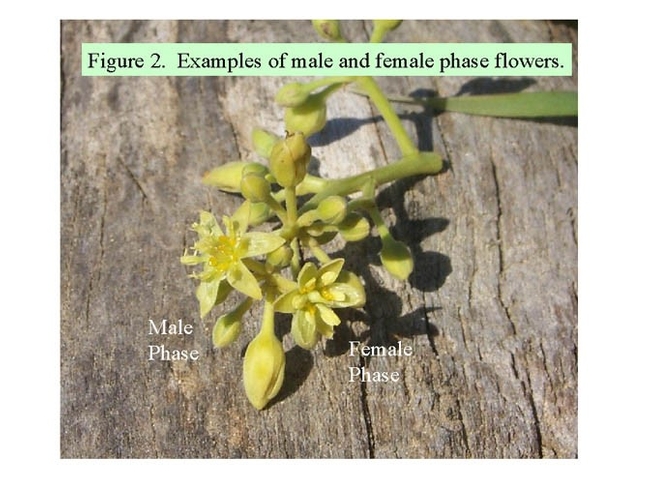- Author: Ben Faber
There are 4,000 species of earthworms grouped into five families and distributed all over the world. Some grow uo to 3 feet long, while others are only a few tenths of inches. We call them nightcrawlers, field worms, manure worms, red worms and some people call them little diggers.
In California, we have some native species of earthworms, but in many cases non-native introduced species have come to dominate. The predominant native species belong to the Argilophilus and Diplocardia while many of the non-native are of European in origin in the Lumbricidae family. Many of these non-natives were probably introduced by settlers bringing plants from home, which had soil containing the worms. A survey of California earthworms by the US Forest Service can be found at:
https://www.fs.fed.us/psw/publications/documents/psw_gtr142/psw_gtr142.pdf
This is a wonderful description of earthworm biology and their occurrence in the landscape.
When digging in citrus orchards, it is common to find earthworms in the wetted mulch under tree canopies. Many of our citrus orchards were initially established by “balled and burlap” nursery trees that brought worms along with the soil. In the case of many avocado orchards, on the other hand, it can be rare to find earthworms in orchards. Most avocado orchards have been established since the 1970s when potting mixes and plastic liners were the standard practice and worms were not part of the planting media. Even though there is a thick leaf mulch in avocado orchards, the worms have not been introduced, and it is rare to find them.
Numerous investigators have pointed out the beneficial effects of earthworms on soil properties. One of the first of these observers was Charles Darwin who published Earthworms and Vegetable Mould in 1881. He remarked on the great quantity of soil the worms can move in a year. He estimated that the earthworms in some of his pastures could form a new layer of soil 7 inches thick in thirty years, or that they brought up about 20 tons of soil per acre, enough to form a layer 0.2-inch-deep each year.
Earthworms, where they flourish, are important agents in mixing the dead surface litter with the main body of the soil. They drag the leaves and other litter down into their burrows where soil microorganisms also begin digesting the material. Some earthworms can burrow as deeply as 5 to 6 feet, but most concentrate in the top 6 to 8 inches of soil.
The worm subsists on organic matter such as leaves and dead roots near the soil surface. The earthworm ingests soil particles along with the organic matter and grinds up the organic matter in a gizzard just as a chicken does. This is excreted in what we call worm casts. The castings differ chemically from the rest of the soil, as they are richer in nitrogen, potassium and other mineral constituents.
Castings are a natural by-product of worms. When added to normal soils in gardens or lawns, they provide the same kinds of benefits as other bulky organic fertilizers. Castings today are not commonly used as fertilizer by commercial plant growers because of their cost relative to other fertilizers. However, castings are used by some organic growers and are sold commercially as a soil amendment or planting medium for ornamental plants grown in pots.
The physical soil churning process also has several important effects:
-Organic residues are more rapidly degraded with the release of elements such as nitrogen, sulfur and other nutrients.
-Some of the inorganic soil minerals tend to be solubilized by the digestive process.
-Extensive burrowing improves soil aeration.
-Burrowing can improve water penetration into soils
-The earthworm carries surface nutrients from the soil surface and imports them into the root zone of the plant.
Although earthworms are considered beneficial to soil productivity, few valid studies have been made to determine whether their presence will significantly improve plant growth. This may seem odd since many of us have learned from childhood that worms are good. It is something like the chicken and the egg analogy. The conditions that are conducive to earthworms are also ideal for plants. Both plants and worms need temperatures between 60 and 100 degrees F for good growth; both need water, but not too much or little; they both require oxygen for respiration; and they do not like soils that are too acid or basic or too salty. By correcting soil conditions that are unfavorable for one will also improve the outlook for the other. The earthworm is a natural component of the soil population. If the soil is properly managed this natural population will thrive. In this sense, the presence or absence or earthworms can be an indicator of the "fertility" of one's soil.

- Author: Ben Faber
The avocado is an odd duck in many ways and notably in its flowering. It has a complete flower, meaning it has both male and female parts in the same flower. Some plants have separate male and female flowers on the same plant and other species have male plants and female plants. The avocado, though acts – or is supposed to act – as if it had different stage flowers at different times. It opens as a female (stamens up), then closes and the same flower then opens as a male (stamens splayed out). They open separately in time, so, in theory, they cannot pollinate themselves – transfer pollen from the stamen (male part) to the pistil (female part). Fertilization occurs when the pollen tube grows down the stigma to the ovule and initiates a fruit – avocado sex. This is called synchronous (in a time sequence) dichogamy (split marriage). This is further complicated by having A and B flower types, where there are different lengths of time that the sexual stages are in flower. You can read more about it here:
http://ucavo.ucr.edu/Flowering/FloweringBasics.html
The problem is that the avocado hasn't read the text book about how it is supposed to flower and who or what transfers the pollen between the male and female stages. The flower can often open as a female and be that way for days and there won't be a single male flower around, or be in a male stage for days and no female. Or sometimes you find some females open and some males and sometimes that follow a time sequence where female may be open in one part of the day and males at another. If the varieties near each other are complementary (pollinizers), some having more females than male flowers and the other tree having more male flowers than females, there can be transfer of the pollen……. if the pollinator is around – a honeybee, native bee, hover fly, fly, wasp, thrips a myriad of potential agents. And if the weather right, and pollen is transferred to the female stage, it's possible there might be fertilization and fruit set.
So, the avocado is in full bloom through much of the avocado growing areas of California. And if you look out at the hives placed in the orchard you may not see any honeybees on the trees. Is that because they aren't flying? The weather is too cool? Because the flowers are in a male stage and they don't want pollen as a source of protein? Is there some other more attractive flower in the area? Do they no like the avocado nectar with its high sucrose and perseitol content?
What is going on? That is my question to you, dear readers? What are you seeing in your orchards? What insects are on the avocado flowers? What temperatures and time of the day are they flying? In what stage are the flowers, male or female? Are you seeing fruit set?
And while you are at it, what birds are you seeing in the orchard? How many different species? Typically there are hummingbirds nesting in avocados this time of year.
Go ahead and make your comments on line here.
Photo: Male and Female Stage Flowers




